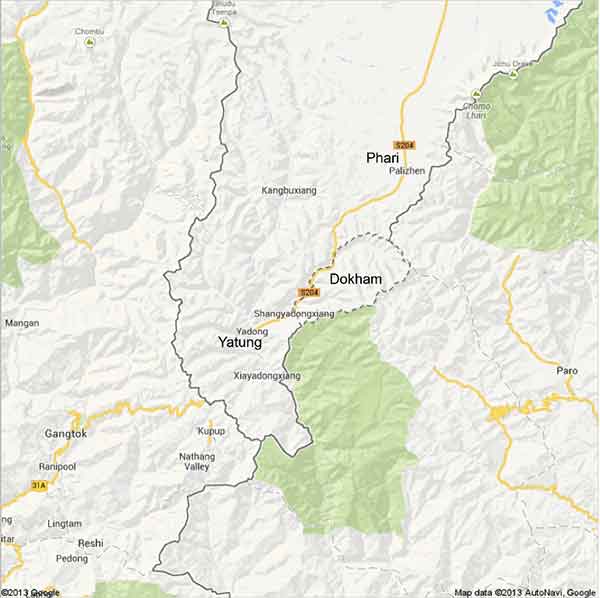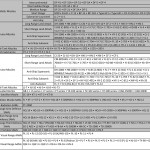 In the Chinese language, the word “crisis” is composed of two characters, one representing the danger and the other, opportunity. The Doklam standoff offers risk of escalation of local war and an opportunity for India to send a message that the rolling strategy of pushing frontiers will no more be tolerated by India. Given the history of Chinese betrayal in the past, India should be aware of the unfolding of the threats that lie ahead. The crisis is grave, stakes are high and challenge too stiff. Winston Churchill once said that, “if we take decisions purely by looking back into the history, we are in danger of losing the future”. Though it is important to learn from the history but then decisions should always be taken keeping future in mind. John Fitzgerald Kennedy had said, “In a world of danger and trial, peace is our deepest aspiration. But it is an unfortunate fact that we can secure peace only by preparing for war.” What is significant is to examine if the resolve of the Indian Army to hold ground is based on the capabilities to go in for the long haul and withstand escalation of standoff to border skirmish or it is based on a hope that China will not push the envelope further? Common military wisdom suggests that military manoeuvres should be based on bold application of capabilities and not purely on hope that adversary will not react in a manner that will jeopardize the security.
In the Chinese language, the word “crisis” is composed of two characters, one representing the danger and the other, opportunity. The Doklam standoff offers risk of escalation of local war and an opportunity for India to send a message that the rolling strategy of pushing frontiers will no more be tolerated by India. Given the history of Chinese betrayal in the past, India should be aware of the unfolding of the threats that lie ahead. The crisis is grave, stakes are high and challenge too stiff. Winston Churchill once said that, “if we take decisions purely by looking back into the history, we are in danger of losing the future”. Though it is important to learn from the history but then decisions should always be taken keeping future in mind. John Fitzgerald Kennedy had said, “In a world of danger and trial, peace is our deepest aspiration. But it is an unfortunate fact that we can secure peace only by preparing for war.” What is significant is to examine if the resolve of the Indian Army to hold ground is based on the capabilities to go in for the long haul and withstand escalation of standoff to border skirmish or it is based on a hope that China will not push the envelope further? Common military wisdom suggests that military manoeuvres should be based on bold application of capabilities and not purely on hope that adversary will not react in a manner that will jeopardize the security.
In the recent past the aggressive posturing by China along the Line of Actual Control (LAC) has become more assertive with every passing season. The commanders on the ground had become increasingly concerned but somehow the political leadership and diplomatic corps of the country always played down the apprehensions of the soldiers. Former Prime Minister Manmohan Singh had described Debsang incident as “localized problem,” and Salman Khurshid then Foreign Minister described it as “one little spot of acne that can be addressed by simply applying an ointment”. Those who have been part of such standoffs in Ladakh and Eastern Theatre knew that such incidents are not localized but a carefully choreographed strategy of China and someday India would have to face the inevitable. If India did not see the emerging contours of conflict in Chinese border policy, India has no one to blame except the ostrich mentality that will cost us dearly in the near future. The main concern of the military at this stage is that India’s capability building and perception of the gravity of the situation is not in sync with the emerging threat from China. Faith in our ability will come with the capabilities we possess but hubris is dangerous. Formulation and execution of military strategy cannot be outsourced to bureaucracy or part time political leadership overseeing affairs of national security. It has to be handled by professionals and thus political leadership must have direct interaction with the military leadership to understand the ground situation. India paid the price for neglecting the advice of the professionals in 1962 and it makes one wonder if we are travelling back in time to commit a similar mistake?
Notwithstanding the above, since India has taken the stand on Doklam plain, therefore, is it an opportunity or a risk that was avoidable given the state of affairs of military modernization? Let there be no doubt, defining moments in the history of a nation come from crisis and not from unbridled path. Choice for India at this stage is to submit and become subordinate power to China in the region and forsake strategic autonomy or rise and challenge China to protect vital national interests. Irrespective of the huge risk the military leadership has taken, it is a strategic signaling to China that it needs to restrain itself and respect India’s sovereignty.
The fallout of the Doklam standoff could have following implications:-
- Collusion between China and Pak over Kashmir will be more pronounced in the near future and India should be prepared for it. Both neighbours will collude at diplomatic, military and political level to make proxy war even more lethal in Kashmir.
- China would not hesitate to give impetus to insurgency in the Northeast and there could be spurt in secessionist activities.
- China would attempt to establish linkages with the LWE through the Communist party of Nepal.
- Jihadi activities could see rise in near future. China may use POK, Bangladesh and Nepal as pivots to pursue this strategy.
- China would engage with littoral states in IOR to encircle and erode India’s strategic interests.
- Even if both nations would disengage China would keep up the pressure on India along LAC and that could trigger a local war even in future.
There are unknown perils and unknown opportunities, thus India must find answers to the following questions:-
- Are we up to the task and can we deal with the military and asymmetric challenges from China?
- Can we sacrifice our future to buy temporary peace or should we prepare ourselves to make sacrifices to build military capabilities for future?
- Can we deal with the two front threat with the current state of military modernization? If not how should we prepare to secure our territorial integrity?
The above mentioned questions can be answered by first fixing Higher Defence Organisation (HDO), military reforms to set the stage for military modernisation and restructuring and putting a structured defence planning process for capability building in a time bound manner.
The options for India at this stage is either to take the threat from China as a challenge & develop capabilities or succumb to the coercion and allow China to encroach upon India’s strategic space. Therefore, India needs to adopt a twin strategy of developing capabilities that is reasonable enough to defend vital military interests and handle the security crisis with stratagem. India would be tempted to piggy back US and its allies to get short term respite but that may not serve the purpose in the long run. Therefore, wisdom will be in building indigenous capabilities and develop hedging strategy resolute enough to deal with the exterior manoeuvre of China and Pakistan collectively.
There is a close relationship between military and external affairs. They ideally should be in sync with each other. Unfortunately the current relationship is only cosmetic in nature and that has created perceptional void. Diplomatic engagement with the adversaries can only be done on the basis of military and economic muscles. Thus the Modi government has been presented with an opportunity to take a relook at the military capabilities before it is too late to correct the past neglect.
If India can handle the military coercion at this stage efficiently, rise of India is inevitable as a regional power, but if India buckles down under the pressure, it will become a subordinate power in the region to China and that is exactly what China wants. At the core of the problem is India’s resistance to CEPC, OBOR and developing partnership with the US, Vietnam and Japan. At this stage of crisis strategic wisdom lies in identifying the vulnerabilities, consolidating the strengths and creating opportunities. Political leadership should keep this in mind that it is not important how well you start a campaign, but what is important is how well you end.
Courtesy: http://www.claws.in/1777/doklamstandoff-secure-peace-but-prepare-for-war-narender-kumar.html





We can sit down and disagree on policies and move on. But we cannot agree to disagree on reality. They have violated our sovereignty. Extended Tibet highway 204, brought a dozer, destroyed our bunkers and are extending the road, cutting off main access to Nathu La. We can only move on if there is retraction.
Let’s review the stand off in light of Indo-China relationship, what is it? We have a disagreement about intrusion. Did we intrude and annex territory in Bhutan? China did.
Let’s go back in time. We have another disagreement about extension of Tibet highway 202 into Tawang. Did we intrude? China did
Let’s go back further. They built the Main road in Tibet thru Aksai Chin. Did we intrude? China did
Let’s go back even further. They annexed the sovereign nation of Tibet. We were sitting down with Chou En Lai in New Delhi and chanting Hindi Chini Bhai Bhai while Xi Jinpiang’s grandfather was barreling over us in Tawang, Nathu La, Bom Dila and Aksai Chin. Did we intrude? China did.
Naked aggression has to be met with righteous indignation and intestinal fortitude!